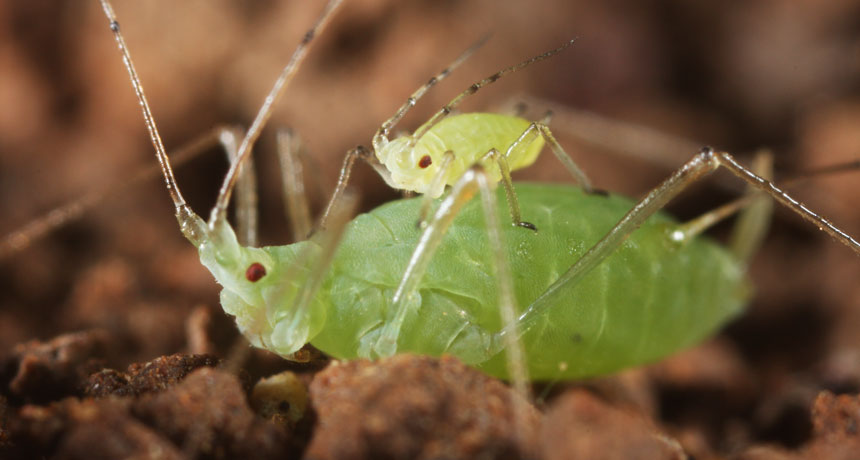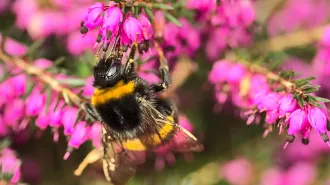Pea aphid youngsters use piggyback rides to escape a crisis
Hitching a ride on reluctant adults helps babies survive after fleeing a grazing animal

SIX-LEGGED LYFT A tiny, very young pea aphid that has jumped off its plant in panic has managed to catch a much-needed ride.
Stav Talal






